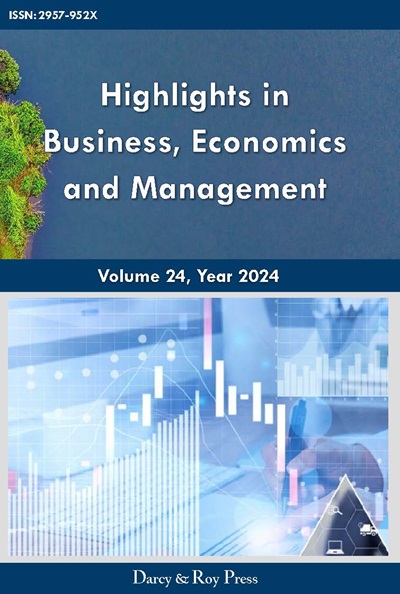Talent Strategy and Future Development of High-tech Enterprises: Taking Huawei as an Example
DOI:
https://doi.org/10.54097/7aj10y98Keywords:
Talent cultivation, talent incentive, innovationAbstract
Innovation is the driving force of enterprise development, and talent is an important way of innovation. Taking Huawei as a research case, this paper discusses in depth how Huawei's talent cultivation system and talent incentive system can realize the innovation stimulation effect. After that, this paper discusses the relevance of Huawei's talent strategy and Huawei's future development to further demonstrate the stimulating effect and importance of talent strategy. Based on the research in this paper, Huawei's talent development system helps Huawei to build up a team of leading talents in various fields to improve its innovation capability in the future development. The talent incentive system helps Huawei to obtain more long-term development capabilities in the future development to improve the sustainability of innovation and intrinsic motivation. Finally, this paper provides specific practical suggestions for Huawei from personalized talent cultivation and talent incentive system innovation, which will help Huawei to better utilize its talent strategic advantages.
Downloads
References
Scott W.R, Meyer J.W. Institutional environments and organizations: Structural complexity and individualism. Journal of Nihon University Medical Association, 1994, 66(2): CD005328.
Martins E.C, Terblanche F. Building organizational culture that stimulates creativity and innovation. European Journal of Innovation Management, 2003, 6(1): 64-74.
West M.A. Effective teamwork: Practical lessons from organizational research. John Wiley & Sons, 2012, (7): 79.
Babenko V. Enterprise innovation management in industry 4.0: modeling aspects. Emerging Extended Reality Technologies for Industry 4.0, 2020, (8): 141-163.
Nick V, Booksx I. 25 best practices in learning & talent development. Journal of Patient Safety, 2007, 3(2): 82-90.
Lewis R.E, Heckman R.J. Talent management: A critical review. Human Resource Management Review, 2006, 16(2): 139-154.
Glover C, Smethurst S. Great ideas wanted. People Management Online, 2003.
Oldham G.R, Cummings A. Employee creativity: Personal and contextual factors at work. Academy of Management Journal, 1996, 39(3): 607-634.
Heimovics R, Brown F.G. Municipal employee behavior as an exchange process. Midwest Review of Public Administration, 1976, 10(4): 201-215.
Horibe F. Managing knowledge workers: new skills and attitudes to unlock the intellectual capital in your organization. John Wiley & Sons, 1999.
Chang B, Chunhua L. Similarity comparison research on internationalization strategy cases of Haier and Huawei based on the grounded theory. Science Research Management, 2014, 35(3): 99.
Zhang W, Alon I, Lattemann C. Huawei goes global: Volume I: Made in China for the world. Berlin: Springer International Publishing, 2020.
Anlesinya A, Dartey-Baah K, Amponsah-Tawiah K. Strategic talent management scholarship: a review of current foci and future directions. Industrial and Commercial Training, 2019, 51(5): 299-314.
Silzer R, Dowell B.E. Strategy-driven talent management: A leadership imperative. Chicago: Publication of the Society for Industrial and Organizational Psychology, 2010.
Collings D.G, Mellahi K. Strategic talent management: A review and research agenda. Human Resource Management Review, 2009, 19(4): 304-313.
Hall D.W, Ren T. Managing foreign high-end talent at Huawei. Berlin: Springer International Publishing, 2020.
Downloads
Published
Issue
Section
License

This work is licensed under a Creative Commons Attribution-NonCommercial 4.0 International License.

















